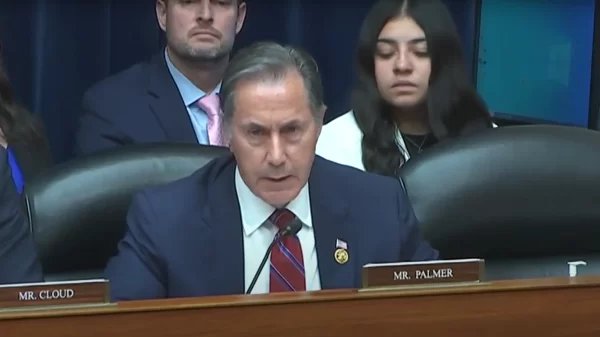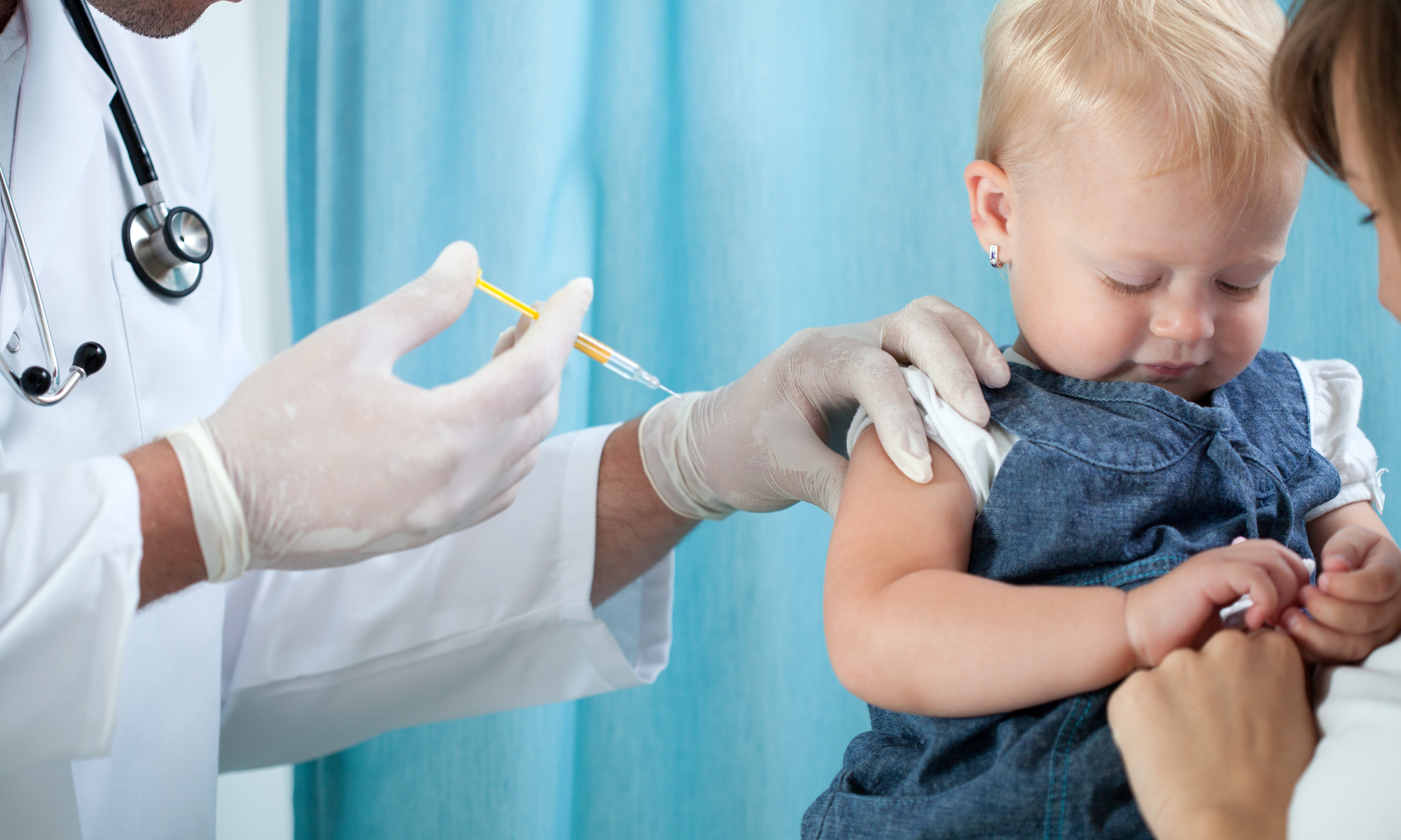By Brandon Moseley
Alabama Political Reporter
The Quarter Horse is the most popular breed of horse in the United States. The quarter horse was bred to work cattle on American ranches. Those attributes also make it the ideal trail riding/family horse for those who want a horse for pleasure purposes. Decades of research, have shown that defects in inheritable genes are responsible for some of the diseases that afflict some American Quarter Horses. According to a statement by the American Quarter Horse Association (AQHA), the effects of these diseases are wide-ranging, from mild and manageable to severe and terminal.
The American Quarter Horse Association said in their statement that passing these diseases on to successive generations would cause unnecessary suffering for the afflicted animals and financial losses for breeders. To combat this, beginning with the 2014 breeding season, all stallions breeding 25 or more mares are required to have the five-panel disease test results on file, per Rule REG108.5 in the 2014 AQHA Official Handbook of Rules and Regulations. In 2015, all breeding stallions must be tested.
Genetic tests have been developed to help breeders identify affected horses, allowing them to make better decisions and avoid perpetuating these undesirable traits. The AQHA panel test looks for five genetic diseases: glycogen branching enzyme deficiency, hereditary equine regional dermal asthenia, hyperkalemic periodic paralysis, malignant hyperthermia and polysaccharide storage myopathy.
When a horse owner orders an AQHA panel test, AQHA will send a DNA kit, and the owner will mail it to the Veterinary Genetics Laboratory at the University of California-Davis for testing. Once the tests are complete, AQHA will notify the owner with the results. The cost of the tests is $85 for AQHA members and $125 for nonmembers. For the panel test in conjunction with the DNA test required for most breeding stock, the cost is $105 for members.
The kit asks for mane hair, but tail hair will works, too. It is important that the roots to be attached to the hair. AQHA members can calling customer service at 806-376-4811 to order a kit. www.aqha.com/genetictesting.
>Hyperkalemic Periodic Paralysis (HYPP) is the genetic disease that rocked the Quarter Horse and other American horse breeds to its core, because of the number of horses afflicted and the reputation and value of many of the horses that proved to be the carriers for the condition.
According to information from Horsegenetics.com, the stallion, Impressive, was born on April 15, 1968. Impressive was a chestnut Appendix American Quarter Horse colt foal, with royal Thoroughbred breeding on both sides of his pedigree. Impressive and his progeny dominated Quarter Horse halter classes at Quarter Horse shows like no other horse before or since. Eventually purchased by Fennel Brown for $40,000, in 1974, at age six, Impressive became the first World Champion Open Aged halter stallion, with 48 halter points. Impressive was valued at $300,000 at the time. Impressive was popular with horse breeders for his muscular and refined form, which he passed on to his offspring, siring almost 30 World Champions. Even though his stud fee was raised to $25,000 he eventually fathered about 2,250 foals, including Noble Tradition, who was a four-time World Champion halter stallion and a highly successful sire in his own right.
By 1993 Impressive was estimated to have in excess of 55,000 living descendants, including Quarter Horses, Paints and Appaloosas. Impressive died on the 20th March 1995, at the age of twenty-seven. According to some estimates he has over 100,000 living descendants today in multiple breeds.
All of his incredible success in life has become overshadowed however by one recessive genetic mutation that he also passed on to his heirs. A rare muscular disorder now known as hyperkalemic periodic paralysis (HYPP) trace directly back to the Quarter Horse legend. Impressive, himself, never exhibited any symptoms of the disease but many of his descendants have contracted the painful, alarming and often fatal disease when they descended from Impressive on both their paternal and maternal lines.
Afflicted animals show a strange muscular twitching that often left their horses temporarily unable to move. These episodes varied widely in degree and duration and were usually misdiagnosed by breeders and veterinarians as tying-up syndrome or colic. In extreme cases, the horse experiences attacks of temporary paralysis that can result in death. Due to the popularity and prominence of the Impressive line, many in the horse industry were reluctant to publicly name Impressive as being responsible for the flaw even though the disorder has never been observed in horses of any other lineages.
Research about HYPP by the University of California-Davis Equine Research Laboratory funded by the AQHA showed that medication and a low-potassium diet could control the disease, lessening the frequency and severity of the attacks. Once a treatment was available many owners of affected horses considered HYPP simply an inconvenience and not a reason not to still show and breed their valuable horses, often selling those foals to customers who were still completely unaware of HYPP.
Eventually molecular genetics research confirmed what most breeders experienced with Impressive line animals already knew by that time and identified that a gene was involved in HYPP. A test was developed to show which horses carried the gene. Even then AQHA and the research community were both reluctant to publicly reveal the truth, fearing the possible legal and financial consequences of a backlash from wealthy horse breeders. Eventually reality set in and HYPP is commonly referred to today as Impressive Syndrome.
In 1992 the genetic test was made available to horse breeders that identifies affected horses with virtual certainty. The simple blood test is available at the University of California at Davis School of Veterinary Medicine, Department of Medicine, or through the AQHA.
In 2004 the AQHA set January 1st 2007 as the date after which foals testing homozygous for HYPP would no longer be registerable, with mandatory testing for HYPP for the descendants of Impressive. Homozygous animals are the ones that received the HYPP gene from both parents and will likely express the disease at some point in their lifetime. Heterozygous horses carry the gene and will transmit it ~50% of the time to their offspring. HYPP is very common in horses raised for halter classes (where Impressive dominated) but is not found in race horses or endurance horses.
Beginning in January 2008, the Appaloosa Association began disallowing the registry of homozygous foals from January 1st 2008. The American Palomino registries passed rulings against both homozygous and heterozygous HYPP horses. If horse owners will test their horses for HYPP and other know genetic diseases and then not let carriers of these diseases breed they can eliminate these diseases from the American horse population.
According to information from Animal Genetics Incorporated, Hereditary Equine Regional Dermal Asthenia (HERDA) which is also known as Hyperelastosis Cutis (HC) is a genetic skin disease commonly found in the American Quarter Horse. Researchers at Mississippi State University and Cornell University believe that the origin of this genetic disorder may trace to somewhere in the popular Foundation Quarter Horse Poco Bueno’s sire line.
The symptoms of this disorder is a lack of adhesion within the layers of skin due to a genetic defect in the collagen that holds the skin in place. This defect causes the outer layer of skin to split or separate from the deeper layers sometimes tearing off completely. These lesions often leaving permanent scars. The pain from the lesions under a saddle often prevents the horse from being ridable.
This is another recessive condition where the heterozygous animals for the trait show no symptoms but pass the gene on to their descendants. The homozygous descendent inherits the condition and are the ones who suffer the symptoms.
According to information at Animal Genetics Incorporated, Glycogen Branching Enzyme Deficiency (GBED) is a disorder first recognized by the University of Minnesota that causes muscle weakness in Quarter Horse and related breeds. According to some studies, at least 3% of the abortions and still births in Quarter horses are due to GBED. Some foals with the disease are born alive but are very weak and may require warming and assistance to nurse after birth. While often these foals will appear healthy at some point they develop seizures, become too weak to stand, or die suddenly. One indicator of GBED foals is that they are less active than other foals. Even with aggressive treatment, there is no known case of a GBED foal living past 18 weeks of age. GBED is frequently misdiagnosed by veterinarians. According to research done at the University of Minnesota this mutation is present in about 10% of all Quarter Horses and related bloodlines. Again GBED is another recessive genetic disease, where heterozygous animals show no symptoms, but the homozygous foals have the condition.
According to information from the University of Kentucky Equine Research Department, Malignant Hyperthermia (MH) is another genetic disorder of horses. MH is found in Quarter Horses and members of related breeds such as Appaloosas and Paints. Less than 1% of Quarter Horses are affected, and those that are seem to trace to two specific bloodlines.
Signs of MH include: high body temperature, either under general anesthesia or in conjunction with an episode of tying-up, usually type 1 polysaccharide storage myopathy (PSSM). If a horse has both MH and PSSM the horse should be fed a diet that is low in starch and high in fermentable fiber and fat to prevent PSSM symptoms. Managing the condition is much harder if both MH and PSSM are present and will likely require that a horse nutritionist evaluate the diet to ensure vitamin E and selenium levels are adequate.
Like these other disorder MH is a genetic disease and eliminating the disease from the Horse Industry requires genetic testing. Unlike the other diseases the MH is dominant over the healthy gene and can be expressed with just one copy of the gene from an affect parent.
Polysaccharide Storage Myopathy (PSSM) is the final genetic disease that the embattled American Quarter Horse Association is testing for in its new required five way test.
According to information from the University of Minnesota Equine Genetics and Genomic Laboratory published in 2008, Polysaccharide Storage Myopathy (PSSM) is an inherited muscle disease that affects many different breeds of horses including Quarter Horses, Paints, Appaloosas, Haflingers, Morgans, draft horses, Tennessee Walking Horses, Rock Mountain Horses etc. PSSM has many different symptoms ranging from muscle pain, cramping, lameness, and cell damage with exercise, to progressive muscle atrophy.
The University of Minnesota Equine Neuromuscular Laboratory discovered a dominant genetic mutation in the GYS1 gene that is responsible for PSSM in many horses. The symptoms are due to the accumulation of abnormal complex sugars within the skeletal muscle of horses.
The University of Minnesota wrote, “The mutation in GYS1 resulting in PSSM has been recognized in many different breeds and is quite common (up to 35% prevalence) in some of them. It is surprising that a mutation linked to moderate-to-severe clinical disease has persisted at such high frequencies in several different breeds. We believe that under historical management conditions (daily work with limited feed), excess sugar accumulation in the muscles was advantageous for horses and as a result this “thrifty” genotype was positively selected for through breeding. Under modern management conditions (limited work and excess feed) however, the mutation leads to disease. We are using molecular genetics techniques to provide evidence for previous positive selection at the GYS1 locus, which is the first example of such selection reported in this species. “Thrifty” genotypes have also been proposed as the underlying cause for susceptibility to common diseases in humans, such as Type II diabetes and hypertension, therefore horses with the GYS1 mutation may be a good model in which to study this theory.”
The PSSM horses can metabolize glycogen and have a normal flux of metabolites IF he is being worked hard, like a farm, carriage, or cavalry horse typically would in the pre-automotive days. However these horses demonstrate exercise intolerance, and painful muscle cramping during a light regimen of activity……as is normal for a horse in a stall who gets lightly ridden on a weekend every once in a while. A horse with the condition needs a specialized diet.
According to the Alabama Horse Council the many segments of the horse industry have an estimated $563 million direct effect on Alabama’s economy. An estimated one in four households has a connection to the horse industry. Quarter horses are the most prevalent breed in the state and are often a component in other breeds, like Appaloosas, Palominos, Paints, as well as the typical grade ranch horse.






















































